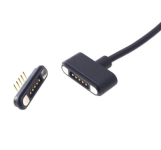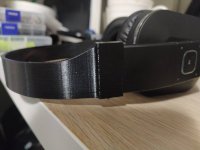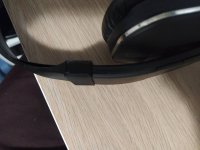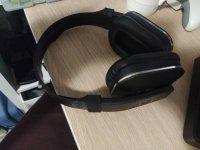p.s go watch john wick, our studio worked on it 
You are using an out of date browser. It may not display this or other websites correctly.
You should upgrade or use an alternative browser.
You should upgrade or use an alternative browser.
3d printing motorcycle parts
- Thread starter Domon
- Start date
I agree. There is room in slicer design to reduce this impediment though. The properties and use cases of 3D printing vs injection molded parts or vacuum molding for that matter will rarely overlap. They each have distinct positives and negatives.The problem is that there are still layers. The layers just separate. Sometimes you can print something on it's side to get the layers facing in a direction that they won't shear as easy but it's always going to be weaker then solid molded plastic.
3d programs with the help of 3d printers make the mold making process easier. There are high profile vacuum molding Youtube sites that have done videos using 3d programs to make negatives of the 3d model.I agree. There is room in slicer design to reduce this impediment though. The properties and use cases of 3D printing vs injection molded parts or vacuum molding for that matter will rarely overlap. They each have distinct positives and negatives.
Alright you 3D printers.
I have a small project for you.
I am working on making magnetic connectors for the LED lights on my Outback Trekker side cases. The kits originally came with a 1/4 twist connectors but I am afraid that these will break if I forget to untwist before removing the cases from the bike. My solution is a magnetic connector. It may be a total failure but I'm willing to try.
I have some magnetic connectors coming from AliE.
Pictured below, the connector with the cable will be coming off the aluminum case and the connector on the left needs to be attached to the bike. I will solder a 3 or 4 conductor cable to the pins.
What I need is a small enclosure to fit the magnetic connector into. Needs to be big enough to house the pins with soldered on cable in the back. I plan on pouring in some black epoxy into this small 3D printed enclosure so keep the pins water tight as well as glue everything together as the connector does not have any mounts to secure with. Therefore the printed enclosure should also have some "ears" with holes at the side so I can secure it to the bike with some screws.
I would need the design and print services.

On a side note.
I thought about getting a 3D printer myself but I have never worked with one. I feel like it would be a huge learning curve before I could actually benefit from it or enjoy it.
IF I was to get one, I think I would prefer a resin printer over a filament printer.
I don't like the fact that you can see every layer in the print job if using filament.
Unless I am just not educated enough on the subject and I am totally wrong.
I have a small project for you.
I am working on making magnetic connectors for the LED lights on my Outback Trekker side cases. The kits originally came with a 1/4 twist connectors but I am afraid that these will break if I forget to untwist before removing the cases from the bike. My solution is a magnetic connector. It may be a total failure but I'm willing to try.
I have some magnetic connectors coming from AliE.
Pictured below, the connector with the cable will be coming off the aluminum case and the connector on the left needs to be attached to the bike. I will solder a 3 or 4 conductor cable to the pins.
What I need is a small enclosure to fit the magnetic connector into. Needs to be big enough to house the pins with soldered on cable in the back. I plan on pouring in some black epoxy into this small 3D printed enclosure so keep the pins water tight as well as glue everything together as the connector does not have any mounts to secure with. Therefore the printed enclosure should also have some "ears" with holes at the side so I can secure it to the bike with some screws.
I would need the design and print services.

On a side note.
I thought about getting a 3D printer myself but I have never worked with one. I feel like it would be a huge learning curve before I could actually benefit from it or enjoy it.
IF I was to get one, I think I would prefer a resin printer over a filament printer.
I don't like the fact that you can see every layer in the print job if using filament.
Unless I am just not educated enough on the subject and I am totally wrong.
There are big differences between resin and fdm (filament). Big ones are build volume, detail, print cost, smell, mechanical properties.Alright you 3D printers.
I have a small project for you.
I am working on making magnetic connectors for the LED lights on my Outback Trekker side cases. The kits originally came with a 1/4 twist connectors but I am afraid that these will break if I forget to untwist before removing the cases from the bike. My solution is a magnetic connector. It may be a total failure but I'm willing to try.
I have some magnetic connectors coming from AliE.
Pictured below, the connector with the cable will be coming off the aluminum case and the connector on the left needs to be attached to the bike. I will solder a 3 or 4 conductor cable to the pins.
What I need is a small enclosure to fit the magnetic connector into. Needs to be big enough to house the pins with soldered on cable in the back. I plan on pouring in some black epoxy into this small 3D printed enclosure so keep the pins water tight as well as glue everything together as the connector does not have any mounts to secure with. Therefore the printed enclosure should also have some "ears" with holes at the side so I can secure it to the bike with some screws.
I would need the design and print services.
View attachment 60053
On a side note.
I thought about getting a 3D printer myself but I have never worked with one. I feel like it would be a huge learning curve before I could actually benefit from it or enjoy it.
IF I was to get one, I think I would prefer a resin printer over a filament printer.
I don't like the fact that you can see every layer in the print job if using filament.
Unless I am just not educated enough on the subject and I am totally wrong.
3D printing isn't too hard if you can think through the part (forces, weak directions in print, etc). The part that takes the most human time is creating the model to print. Fusion360, tinkercad and many other software packages are available for free for non-commercial use.
Send me the model and I can print it.
I only have fdm but if you really care about look you can sand and paint it. Fully potting inside of container should help a lot with mechanical strength. With FDM, the larger the nozzle, the lower the detail and the stronger the part (and vice versa). Pay attention when modelling to the expected nozzle diameter (0.4 mm is most common but 0.2 to 1.0 are readily available). You don't want to put radiuses or details in the model smaller than nozzle diameter as they won't make it to the print (or they will be janky).
Last edited:
I know about the resin exposure somewhat . I have worked with 3D printers in a dental environment (install and service only)
I know the resin is not good for you if you come in contact with it. It also needs to be cleaned (99% alcohol) and cured in a UV light.
I keep telling myself that I will "troubleshoot" an issue one day and print some stuff. Haven't gotten around to it.
In this case the fdm doesn't matter. I will be small enough and mounted to the underside of the bike so unnoticeable.
Thank you for the offer. I will try to draw something up and PM you.
I know the resin is not good for you if you come in contact with it. It also needs to be cleaned (99% alcohol) and cured in a UV light.
I keep telling myself that I will "troubleshoot" an issue one day and print some stuff. Haven't gotten around to it.
In this case the fdm doesn't matter. I will be small enough and mounted to the underside of the bike so unnoticeable.
Thank you for the offer. I will try to draw something up and PM you.
Draw up a sketch and send dimensions of parts. I usually print at .2mm wall thickness. So parts usually good.
Sent from my Mi A3 using GTAMotorcycle.com mobile app
Sent from my Mi A3 using GTAMotorcycle.com mobile app
Bluetooth headphones broke. So I made a new one. Not as fancy as the adjustable on it had but I made this and pretty sturdy for home use.


Sent from my Mi A3 using GTAMotorcycle.com mobile app



Sent from my Mi A3 using GTAMotorcycle.com mobile app

















